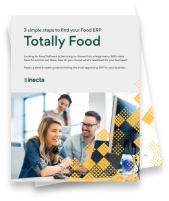The ripening process is at the heart of modern produce logistics. From bananas and mangoes to tomatoes and melons, managing ripeness is key to extending shelf life, reducing waste, and ensuring optimal quality at the point of sale.
In this post, we’ll explore:
-
How the ripening process works
-
The role of ethylene in fruit maturation
-
Differences between climacteric and non-climacteric fruits
-
How the produce industry controls ripening to meet logistics demands
What Is the Ripening Process?
Ripening is a natural phase in a fruit’s lifecycle where it becomes softer, sweeter, and more palatable. However, for produce companies, ripening is a logistical challenge—especially for long-distance shipping.
That’s where science comes in.
Ethylene: The Natural Ripening Agent
Ethylene is a plant hormone (specifically a phytohormone) that triggers and accelerates the ripening of many fruits. Once ethylene concentration hits 0.1 to 1.0 ppm (parts per million), the ripening process becomes irreversible.
Common Ethylene-Responsive Fruits:
-
Bananas
-
Tomatoes
-
Mangoes
-
Papayas
-
Melons
-
Pineapples
These fruits are categorized as climacteric—they continue to ripen after harvest due to increased ethylene production.
Climacteric vs. Non-Climacteric Fruits
Understanding this difference is critical in produce supply chain management:
Type |
Ripens After Harvest? |
Examples |
|---|---|---|
| Climacteric |
Yes |
Mangoes, Avocados, Bananas |
| Non-Climacteric |
No |
Grapes, Strawberries, Citrus |
Non-climacteric fruits must be harvested at peak ripeness, as they won’t ripen further post-harvest—making timing and temperature control even more critical.
How the Produce Industry Controls Ripening
To gain more control over shelf life, scientists and producers use several methods to delay or accelerate ripening:
Ethylene Suppression Techniques:
-
Introducing ACC Deaminase Gene
Reduces the amount of ACC, a precursor to ethylene, thus slowing ripening. -
Suppressing ACC Synthase Gene Expression
Alters enzyme activity, limiting ethylene production.
Think of these methods as tools to "pause" or "play" ripening—buying more time for storage, shipping, and shelf display.
Why It Matters for the Produce Supply Chain
The end goal is simple: deliver perfectly ripe produce to the consumer while minimizing spoilage and cost. ERP systems like iNECTA Produce help growers, packers, and distributors manage:
-
Temperature-sensitive logistics
-
Ripening room controls
-
Inventory tied to expiration windows
-
Forecasting for harvest and delivery timing
Final Thoughts
From gene expression to warehouse ethylene control, the science behind ripening has become a powerful tool in the hands of produce professionals. When managed properly, it enables the industry to reduce food waste, increase profits, and provide consistently high-quality fruit to markets around the world.











Free Valuable Resource!
3 simple steps to find your Food ERP
Free Valuable Resource!
3 simple steps to find your Food ERP
*We will never sell your information. Keeping your data and privacy secure is our highest concern.